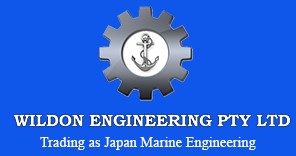Mitsubishi Selfjectors: What are Centrifugal Disc Separators For?
Blog | May 21st, 2019Mitsubishi Selfjectors are used on boats to purify contaminated oil streams. Think about it, the fact that fluid contaminants cause component failures. Granted, engineers on large seagoing vessels stock up on genuine replacement parts when they’re docked. They have maintenance matters on their minds. Small boat owners tend to be just as prudent. After all, they can’t just run down to a store and pick up a new part.
Mitsubishi Selfjectors Extend Component Lifespan
No, stuck at sea, perhaps with a storm approaching, there’s no way a boat engineer can reach a parts store. That’s one reason why this oil separating equipment is so important. More than important, especially in systems that attract works-gumming particulate deposits, the centrifugal separation mechanism stops parts fatigue. Unlike filtration units, however, Mitsubishi Selfjectors are based on a dynamic particulate splitting principle.
Deconstructing Centrifugal Disc Separators
First of all, let’s not come down too heavily on filtration media. Filters work, there’s no denying that point; except, it is easy to block that media, especially with particulates. Oily sludge will cause a clog, which will go unnoticed until the ship engine starts to overheat. Maintenance routines take care of the problem, and the filter is cleaned or replaced. Unfortunately, the damage is done. Centrifugal plates use spinning energy to mechanically split lighter, less dense fuel/oil fluids from heavier foreign materials. More importantly, though, this spinning assembly of centrifugally charged plates won’t clog. Entering the chamber section of the oil purification gear, the dirty oil encounters the disc stack. When the gunked up fluid gets between the disc pairings, the separation principle intervenes.
Separates Solid and Fluid Phases
Going back to the density and solidity issue, all of the thin, viscous oil or fuel gets pulled towards the axial centre of the disc stack. Meanwhile, the dirty particulate matter is flung out towards the plate rims, where it’s dried and removed. The hardened “cake” can be removed at leisure. Interestingly, there might be a third fluid phase in the mix. Along with the heavy granules and moderately heavy oil/fuel, there could be water in the fluid stream, too. Lighter and thinner than either the dirt or the oil, this lighter phase is also split from the engine’s lifeblood.
As proven by the descriptions and disambiguation covered earlier, dynamic Mitsubishi Selfjectors are extraordinarily effective when it comes to oil purification and/or fuel clarification efficiency. Unlike filters, they don’t clog over time. More gifted than any particulate sifting media, the centrifugal discs separate fluid and solid mediums. They even split engine-oxidizing watery streams from engine oils and fuels, thus preventing the nasty fluid emulsifying effects that attenuate engine performance.
Optimized by NetwizardSEO.com.au
Recent Posts
- Yanmar Diesel Generators: Planned vs Predictive Maintenance Strategies for Remote Operations
- Mareflex SOLAS Marine Tapes: Safety Applications on Marine Vessels
- Yanmar Propulsion Systems: FPP vs CPP Propellers for 6EY and 6N Series Fuel Efficiency
- Mitsubishi K.K. Purifier Separator: The Key to Cleaner Fuel and Smoother Operations
- Kemel Air Seal Retrofits: Leak-Free Stern Tube Seals and Reduced Lube-Oil Risk
- Yanmar Auxiliary Generators: Sizing for Reefers, Hotel Loads, and Dynamic Positioning Systems
- Water Lubricated Stern Tube Bearing (EVR): Proven Technology for Smooth and Quiet Operations
- Marine Spare Parts Australia: Genuine Components for All Vessel Types
- Yanmar Diesel Generators – Powering Remote and Off-Grid Operations
- Authorised YANMAR Parts Supplier in Australia – Genuine Components Guaranteed
